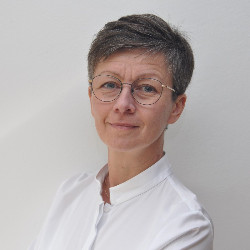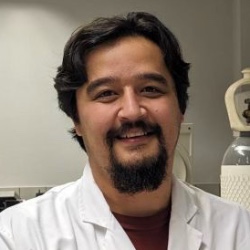Human Advanced In Vitro Model Initiative
Select a Section
Past Recipients
From Idea to Impact: Watch Research Evolve Over a Year
Explore how past recipients' projects have evolved over a year. Watch short interviews recorded at the start of their research and follow up one year later to see their progress.
Dr. Felicia Gerst, Senior Scientist, University of Tübingen, Germany
Project Title: Impact of pancreatic adipose tissue on islet function
Initial Interview I Follow-up Interview
This project aimed to better understand how ectopic fat impacts islet function (i.e., the regulation of metabolism and glucose control) and how pancreatic adipose tissues contribute to the onset of obesity-related type 2 diabetes. Dr. Gerst developed a human pancreatic adipose organoid model, ensuring more clinically relevant and ethical research outcomes.
Dr. Gerst presented the results of the project at the German Diabetes Association Congress and the European Association for the Study of Diabetes Congress.
Dr. Gabriela Kania, Principal Investigator, University Hospital of Zürich, Switzerland
Project Title: Exploring liver effects in a multi-organ-on-a-chip model of cardiac fibrosis across diverse experimental scenarios
Initial Interview I Follow-up Interview
This project advanced understanding of cardiac fibrosis, a condition that causes scar tissue to build up in the heart, and how the condition plays a role in liver function. By utilizing a multi-organ-on-a-chip model, the research replicates heart-liver interactions in a fully human-based system, reducing the reliance on animals that often fail to capture the complexity of multi-organ diseases and drug responses.
Dr. Kania’s team has shared the research in poster presentations to thousands of scientists at two conferences and a presentation at the Keystone Symposia on Molecular and Cellular Biology.
Dr. Karina Orlowska, Postdoctoral Research Associate, Michigan State University, United States
Project Title: Development of chemical safety screening by high-throughput sequencing
Initial Interview I Follow-up Interview
This project developed a human-relevant scalable workflow for the mechanistic explanation and safety assessment of chemicals and drugs using high-throughput screening. By integrating 3D human liver microtissues with transcriptomic analysis, this approach provides a reliable alternative to toxicology tests using animals, improving chemical safety assessments while reducing animal testing in drug development and regulatory evaluations.
Dr. Ute Wölfle, Principal Investigator and Senior Scientist, University of Freiburg, Germany
Project Title: Influencing the interaction of fatty liver spheroids and psoriasis keratinocytes by liver-protecting herbal remedies
Initial Interview I Follow-up Interview
This project investigated whether liver-protecting therapeutics could reduce fatty liver inflammation as well as psoriasis inflammation. This study served as a starting point to find the most promising herbal liver-protecting compounds that could be used in a later clinical trial to investigate how psoriasis and fatty liver-associated inflammation interact. By using complex human liver models instead of mice, this research provides a more ethical and predictive approach to studying inflammation and treatment responses.
Dr. Wölfe presented her research at the Microphysiological Systems World Summit, where scientists meet to discuss in vitro technology like organs-on-a-chip and organoids and at the Physicians’ Association for Anthroposophic Medicine annual meeting.
Dr. Burak Toprakhisar, Postdoctoral Researcher, Vrije Universiteit Brussel, Belgium
Project Title: Revealing the early cellular events in human liver inflammation by using HiPSC
Initial Interview I Follow-up Interview
This project explored the initiation and progression of liver disease in a human stem cell-derived liver coculture model by revealing cellular stress activation pathways in real-time. By using human pluripotent stem cells to generate liver organoid models, this research provides a human-specific alternative to animals in liver disease studies.










